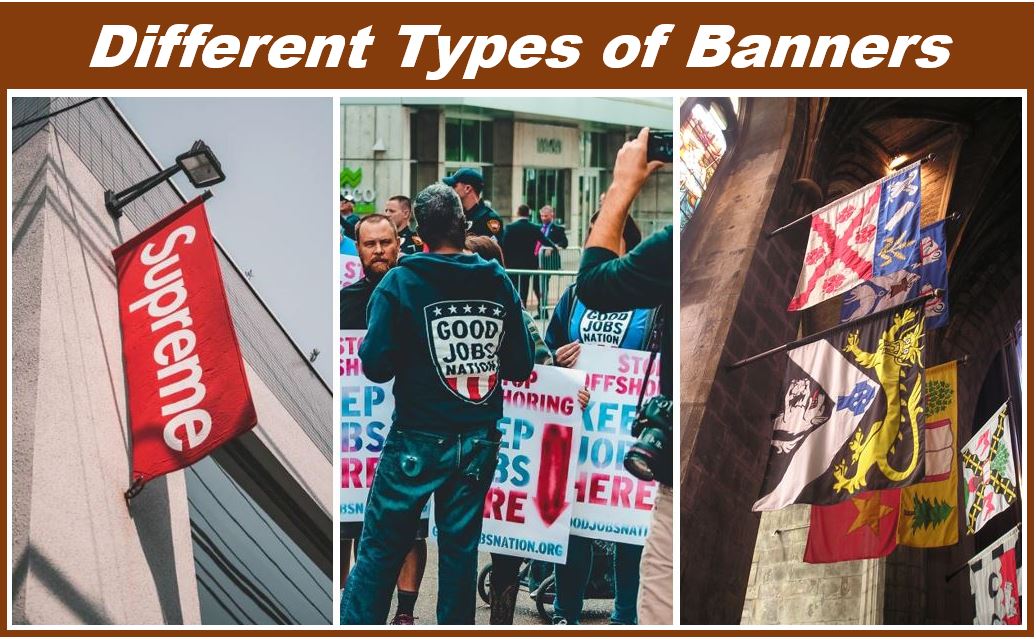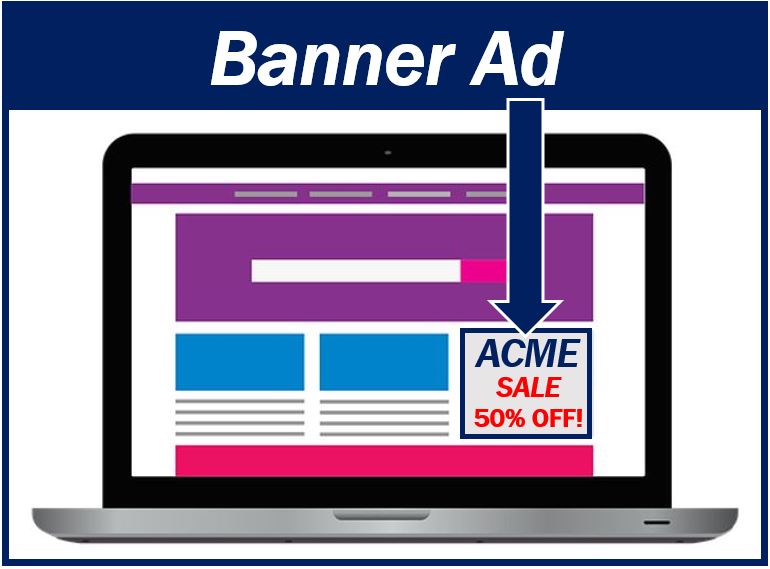A banner may be a long piece of cloth or a flag on which there is a slogan, logo, symbol, advertisement, or other type of message. People use them in marketing, demonstrations, public events, and protests.
Since the advent of the Internet and eCommerce near the end of the last century, the term banner has also included messages, often adverts, placed on web pages.
Many types of banners

We often see banners during sports matches. Soccer (UK: football), rugby, football (UK: American Football) and other teams or clubs have banners. When a team wins a major national or international competition, crowds holding that club’s banner parade in the streets or at the airport where they welcome their players home.
A banner of arms or heraldic banner displays the coat of arms of a family, region, or country. Historically, the same design appeared on the shield of knights and other warriors.
This article focuses on the meaning of the term in the world of business; specifically marketing and advertising.
Banner ads

Banner ads are advertisements that companies and other organizations display on web pages. Typically, they consist of an image, video, or multimedia object. These type of ads may be still (static) or animated.
The aim of the advertiser is to attract visitors to a specific website or remind consumers of a product, service, company, or brand.
Outdoor advertising
Even though digital marketing and advertising have become multi-billion dollar global markets, offline campaigns are still important, and in many cases extremely effective.
For companies on a limited budget, banners or feather flags are useful options. With outdoor portable displays, entrepreneurs can control where to place their ads.
Outdoor banners offer businesses several benefits:
- They are easy to transport.
- Assembling them is straightforward.
- They are made of durable materials, so you can use them again and again.
- You can place them in strategic places, i.e., where many people pass by.
- They are relatively cheap.
- They can be tailor made.
- If done properly, they may have a powerful effect on consumer behavior.
Retractable banners, which can be folded up, are very easy to use and carry. They can also fit in tiny spaces.
Etymology of banner
Etymology is the study of where words came from, i.e., their origins, and how and when their meanings changed over time.
The word banner appeared in the English language in the twelfth century with the meaning “piece of cloth attached to the upper end of a pole or staff.” It came from the Old French word “Baniere,” which meant “flag, standard, banner.”
The Old French word came from the Latin word “Bandum,” which means “standard.” It was not until the beginning of the 20th century that the term also acquired its modern marketing meaning.
